- Home
- Peter Ackroyd
J. M. W. Turner Page 6
J. M. W. Turner Read online
Page 6
Yet, more significantly, he had a symbolic vision of the world, a world filled for him with mythic correspondences and spiritual associations. He was preoccupied with emblem and with allegory, in a culture becoming increasingly dominated by fact and statistic. He was in the conventional sense of his period a thoroughly irreligious man, and paid no attention to the rituals and observances of the Established Church, but his faith was of quite a different kind. There is the apocryphal story of his muttering, on his deathbed, “The sun is God.” If it is indeed a legend it is nevertheless an appropriate and convincing one. He understood the sacredness of light as the power which coursed through all things, and which charged the world with a divine grandeur. He had an almost primeval view of the heavens which, in sunlight or in moonlight, brooded over the earth. He bowed down to the deities of the cosmic order.
He is a Londoner, too, in his writings. In his familiar letters he displays a rambling urban vivacity, a tendency to veer off the point and to muddle his syntax. He had a brilliantly eclectic mind, picking up words and images while at the same time forging them in new and unexpected combinations. He conceived several ideas all at once, and sometimes forgot to separate them into their component parts. This was true of his lectures, too, in which brilliant perceptions were scattered in a wilderness of words. As he wrote on another occasion, “The lake babbled not less, and the wind murmured not, nor the little fishes leaped for joy that their tormentor was not.”
This strangely contorted and convoluted style also characterises his verses, most of which were appended as commentaries upon his paintings. Like Blake, whose prophetic books bring words and images in exalted combination, Turner wished to make a complete statement. Like Blake, he seemed to consider the poet’s role as being in part prophetic. His was a voice calling in the wilderness and, perhaps secretly, he had an elevated sense of his status and his vocation. And like Blake, too, he was often considered to be mad. He lacked, however, the poetic genius of Blake— compensated perhaps by the fact that by general agreement he is the greater artist.
He began composing verse in 1793, and never really stopped. He seemed to have composed at high speed, and in a variety of locations. He wrote verse all the time, jotting it down in the margins of books and on scraps of paper; he also had a particular notebook which he reserved for his poetry. That poetry, as it appears as an adjunct to his painting, is rich and cluttered. His surviving verses have a certain rough magic, and demonstrate his range. His poetry is perhaps too cerebral, however, employing as its model eighteenth-century versions of didactic and pastoral verse.
He had a particular love for James Thomson’s The Seasons, an epic of natural observation that has not survived what Turner might have called the scythe of time. But it is interesting, in any event, that his principal literary model was from the genre of eighteenth-century landscape poetry. His painting looked ahead, and his poetry looked behind. Yet the artist’s verse is not wholly devoid of merit—surcharged
With wrathful vapour, from the secret beds
Where sleep the mineral generations drawn.
Thence nitre, sulphur, and the fiery spume
Of fat bitumen, streaming on the day,
With barbarous-tinctured trains of latent flame,
Pollute the sky.
He loved to represent conflict and cataclysm, chaos and confusion. The epic poem which he hoped to complete, “The Fallacies of Hope,” also suggests something of the interior imagination of Turner; its title suggests isolation and an anxiety not untouched by despair. There is a great difference, however, between his poetry and his painting. He thought when he wrote; he did not need to think when he painted or, rather, he employed a different kind of thinking which was much closer to the breath of his being. Some critics were ungenerous about his literary talent, but one friend looked at it in a more kindly light. “Turner’s thoughts,” he said, “were deeper than ordinary men can penetrate and much deeper than he could at any time describe.” Just as there was a deep mystery about his painting, so a lesser mystery—which we might call confusion—hovers about his words.
CHAPTER SIX
1811–1813
He was busily engaged, in 1811, with selling copies of his Liber Studiorum from his own house. He had quarrelled with his engraver, Charles Turner, and in typically robust fashion had decided to publish them himself. But then in the summer he decided to extend his range of activity, as it were, by travelling to the West Country with a view to producing water-colours for engraving in a book entitled Picturesque Views of the Southern Coast of England. He needed to be perpetually busy, as if there were some great relief or release in continual activity. He prepared himself for the journey in his usual methodical fashion, going so far as to list the numbers and dates of the banknotes he was carrying with him. He listed all the places that he visited, too, among them the most picturesque spots in Dorset, Devon, Cornwall and Somerset. There were journeys to Corfe Castle and to Lulworth, to Lyme Regis and Land’s End, Tintagel and Clovelly.
When in the neighbourhood of Barnstaple he took the opportunity of meeting his father’s family. He and the West Country Turners may have stared at one another, without having much in particular to say. But he did feel some deep connection with his relatives. He returned to Devon on several occasions, and once told a friend: “I am a Devon man— Barnstaple.” He was not of course a native of that place, and his remark could have been a piece of cheerful misrepresentation. But the ties of family run very deep. When in Devon, perhaps the most echoic of English counties, he may have heard ancestral voices and felt a sense of belonging. He was away for some two months altogether, in which period he completed some two hundred pencil sketches.
He spent so much time in the West Country because he had become thoroughly disenchanted with his Hammersmith home. The Middlesex Water Company had erected a 120-foot chimney behind his house, and the noise of construction and general labouring activity must have been immense. He was entranced by the industrial life of the river, but he did not appreciate it when it was literally at his back-door. So even now he was planning the construction of a house in a much quieter spot, further upstream in Twickenham. He had perhaps anticipated his move to the neighbourhood in a painting exhibited in 1808, Pope’s Villa at Twickenham, in which he implicitly mourns the demolition of that hallowed spot in the previous year. So for him Twickenham was a place of sacred association.
He had purchased the land some four years before, but was now actively planning and sketching the design of his new villa. His youthful period as an architectural draughtsman proved its usefulness, and he finished many plans and elevations; he drew the rooms, and such details as the cornicing and the mantelpieces. He said that he had always wanted to be an architect, and now he had his opportunity. He even made himself responsible for the hiring of the builders and the labourers, and noted down the costs of landscaping the grounds—“100 Planting. 20 garden. 40 Pond.”
In this period, too, he fell ill. He seems to have been suffering from something he called “Maltese Plague,” the symptoms of which included “Sickness, debility, shivering, heat, thirst, headache. Delirium, darkspots, ulcer.” It is not clear what combination of these distressing effects he suffered, but he smoked a narcotic herb to curb the effects of breathlessness. He may have believed himself to be growing old.
The house was erected in the course of 1812; it was a modest villa-like construction of two storeys, with a basement for a small scullery and kitchen. At the centre of the house, between the dining-room and the library, was Turner’s studio filled with light. A serpentine staircase led to the two bedrooms on the first floor. There was a lily pond in the garden, and Turner planted a line of willow trees upon which he often gazed. Turner also ornamented the interior of the house with models of ships in glass-cases, against which he painted the background of the sea. It was, in many respects, a perfect retreat.
At first Turner called it Solus Lodge, perhaps as testimony to the fact that he had finally parted fr
om Sarah Danby.
Sandycombe Lodge. This small villa was designed and decorated by Turner himself, and built on land he had purchased at Twickenham.
But the name was unwelcoming, and it was changed to Sandycombe Lodge. In any case Turner did entertain guests. Fellow artists and fellow Academicians paid visits, to be regaled with cheese and porter or cake and wine. It has been described as a doll’s house, neat and unpretending, but its neatness and simplicity testify also to the essential simplicity of Turner’s nature. One young visitor remembered his visits to Twickenham where everything was of the most modest pretensions . . . The table cloth barely covered the table, and the earthenware was in strict keeping. I remember his saying one day, “Old Dad,” as he called his father, “have you not any wine?” Whereupon Turner senior produced a bottle of currant, which Turner smelling, said, “Why, what you been about?”
It seems that his father had added too much gin.
Old Dad settled very happily and comfortably into Sandycombe Lodge, where he took particular pleasure in tending the garden. On Tuesdays he visited the market at Brentford, and would return with the week’s provisions stored in a knotted blue handkerchief. In the spring and summer he would supervise the gallery in Harley Street, when his son was exhibiting, and often made the journey from Twickenham on foot. When Constable and Farington once visited the gallery, the old man told them that “he had walked from Twickenham this morning, eleven miles; his age, 68. In two days the last week he said he had walked fifty miles.” He might have used his son’s pony, Crop-Ear, but for some reason chose not to do so. Perhaps the beast was considered to be Turner’s sole possession; he rode on it for various painting expeditions, and declared that “it would climb like a cat and never get tired.” When it died, after strangling itself on its own fastenings, he buried it in the garden.
Old Dad did in the end find an alternative mode of travelling. “Why lookee here,” he told an acquaintance, “I have found a way at last of coming up cheap from Twickenham to open my son’s gallery. I found out the inn where the market-gardeners baited their horses; I made friends with one on ’em and now, for a glass of gin a day, he brings me up in his cart on top of the vegetables.”
Turner’s beloved “Old Dad.” After his mother’s death in an asylum, Turner invited his father to share his home. The old man lived out the rest of his life with his son, working as his housekeeper and gardener as well as his artist’s assistant. This sketch shows the father in the audience at one of the son’s lectures on perspective (27 January 1812). Below are Turner’s eyes.
Turner’s beloved “Old Dad.” After his mother’s death in an asylum, Turner invited his father to share his home. The old man lived out the rest of his life with his son, working as his housekeeper and gardener as well as his artist’s assistant. This sketch shows the father in the audience at one of the son’s lectures on perspective (27 January 1812). Below are Turner’s eyes.
The exhibition gallery in Harley Street had now been satisfactorily renovated and in 1812 Turner showed some of the paintings inspired by his journey to the West Country. But these are not simply images of a specific place or setting; they are images of radiance and pellucid space. In one of them, Teignmouth, a young girl watches two cows by the sea-shore; she has raised her arms above her head, in instruction or salutation, while above her the great glowing sky reaches into immensity.
The major work of this year, however, was reserved for the Royal Academy. Snow Storm: Hannibal and his Army crossing the Alps may have owed something to Turner’s readings in classical history, but it was also a scene of great significance to what we may now call the Romantic imagination. It had been described by Mrs. Radcliffe, for example, in The Mysteries of Udolpho. The painting was praised by critics and other artists at the time as a grand and sublime piece of work. The diarist, Crabb Robinson, believed it to be “the most marvellous landscape I had ever seen . . . I shall never forget it.” The celebrated painter, John Flaxman, was only a little less enthusiastic and described it as “the best painting in the Exhibition.” It is a picture of astounding power and energy, the great movement of the storm billowing across the canvas as if the paint itself were surcharged with fever and animation. The forces of the atmospheric world here far surpass the movements of men, in a paean to the natural sublime.
CHAPTER SEVEN
1813–1816
When Turner conversed with Constable in the summer of the following year, at a Royal Academy dinner, Constable reported that “I was a good deal entertained with Turner. I always expected to find him what I did. He has a wonderful range of mind.” It is an accurate comment, despite the fact that Turner never returned the compliment; he was never fond of Constable and a fellow artist went so far as to say that Turner “detested” him.
But the “range” of which Constable spoke was given material expression in this year at the Academy exhibition. After the grandeur and sublimity of Hannibal crossing the Alps Turner submitted a painting in quite a different key. It was entitled Frosty Morning, depicting a man with a gun and a young girl with a hare across her shoulders in a landscape populated by labourers and horses. As in many of Turner’s more naturalistic paintings, the story or narrative remains oblique and mysterious. Monet said of it that it was “peint les yeux ouverts. ” Turner’s eyes were opened in spiritual as well as material vision, with the whiteness of the beaten earth and the whiteness of the sky in implicit communion. The artist himself was characteristically matter-of-fact about the whole process, declaring that “he was travelling by a coach in Yorkshire and sketched it en route. There is a stage-coach in the distance that he was on at the time.” It has often been claimed, at this anecdotal level, that the adult male is Walter Fawkes and that the young girl is the image of one of Turner’s own illegitimate daughters.
Frosty Morning seems to have been the only newly composed oil-painting that he exhibited in 1813, the rest being selected from previous oils he had finished. The sudden dearth may have been the result of the debilitating illness that he had been suffering in the previous year, or it may simply have been the result of fatigue. His rate of production had, for many years, been extraordinary. He had also turned his attention to the production of water-colours designed for the engraver.
There was one other local difficulty which may have been a cause of some enervation. A collector and amateur artist, Sir George Beaumont, had decided that Turner was a pernicious influence upon English painting and, from a position of some authority, declaimed to the world on Turner’s many sins against artistic propriety. He declared that he “had done more harm in misleading the taste than any other artist.” He accused him, not unjustly, of “perpetually aiming to be extraordinary.” Yet his persistent criticism angered Turner. Beaumont was an influential man, considered a possible president of the Royal Academy, and his public hostility to Turner rankled. An admirer and imitator of Turner, Augustus Callcot, had been similarly disparaged by Beaumont and had as a result sold none of his work at the Royal Academy exhibition for three years. In 1813 Turner had determined to show nothing at the Royal Academy but then, on further reflection, he decided that this would be to give Beaumont a small victory. He told Callcot that he was “determined not to give way before Sir George’s remarks.” So Frosty Morning appeared upon the walls of the Academy.
In the same summer he managed to retreat from the somewhat febrile atmosphere of London and paid a second visit to Devonshire. He stayed at Plymouth, from which town he made various excursions into the surrounding countryside. A local journalist, Cyrus Redding, was fortunate enough to accompany him on some of these trips and left a record of his encounters with the now celebrated artist. He described him as a “rather stout and bluff-looking” man who “somewhat resembled the master of a merchantman.” No doubt his ruddy complexion was derived from his labours in the open air. Turner was a “good pedestrian, capable of roughing it in any mode the occasion might demand,” but he was also an “excellent sailor.” On one occasion they put o
ut to sea with other passengers, when they encountered a heavy swell which turned “boisterous”; Redding recalled that, while the others grew decidedly queasy, Turner “sat in the stern sheets intently watching the sea, and not at all affected by the motion . . . when we were on the crest of a wave, he now and then articulated to myself—for we were sitting side by side—‘That’s fine!— fine!’ ”
“Fine” in fact seems to have been his favoured compliment in any circumstance. Redding pointed out, in a house where they were staying, George Stubbs’s painting of Phaeton and the Horses of the Sun—“but it elicited no further remark than the monosyllable ‘fine.’ ” There were other celebrated paintings hanging in the house but “they seemed to attract little of his attention.” Redding then suggested that “it was not easy to judge from his manner what was passing in his mind.” He was in many respects a reticent man, not given to expressions of admiration or enthusiasm. It was part of his hatred of humbug in any form. He hated gush. In that he might be considered to be typically English. Redding also noticed that Turner could, when he pleased, “make sound, pithy, though sometimes caustic remarks upon men and things with a fluency rarely heard from him.” He was possessed by a sound stock of good sense; he was always a good judge of “men and things.” As a result of his close observations of the artist Redding concluded that “beneath his homely exterior, there was a first-rate intellect.”

 The Clerkenwell Tales
The Clerkenwell Tales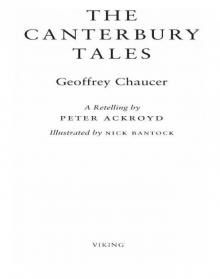 The Canterbury Tales
The Canterbury Tales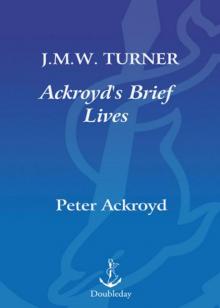 J. M. W. Turner
J. M. W. Turner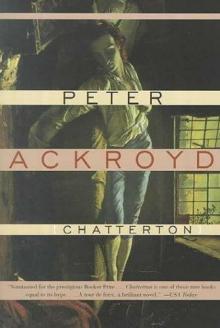 Chatterton
Chatterton The Canterbury Tales – A Retelling
The Canterbury Tales – A Retelling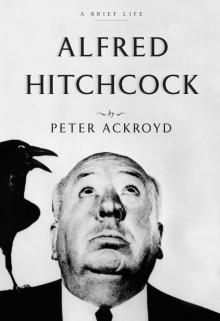 Alfred Hitchcock
Alfred Hitchcock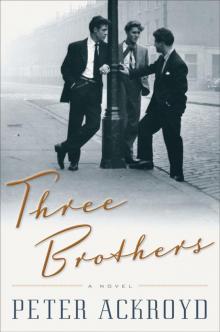 Three Brothers
Three Brothers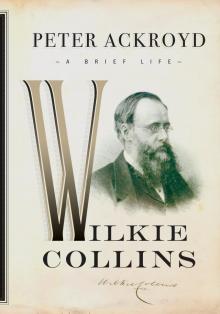 Wilkie Collins
Wilkie Collins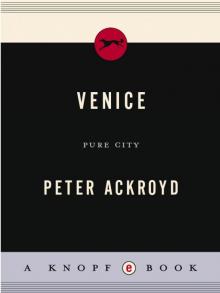 Venice
Venice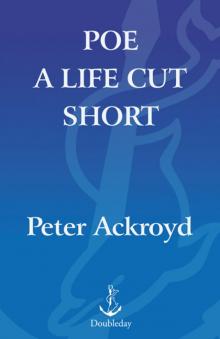 Poe
Poe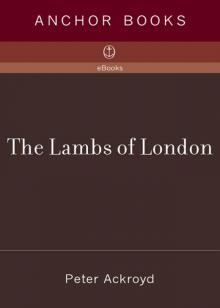 The Lambs of London
The Lambs of London London
London Queer City
Queer City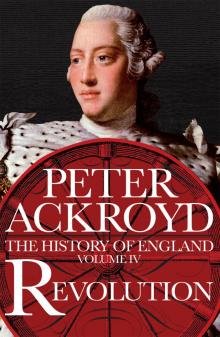 Revolution, a History of England, Volume 4
Revolution, a History of England, Volume 4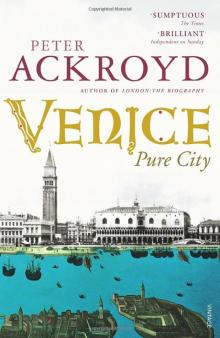 Venice: Pure City
Venice: Pure City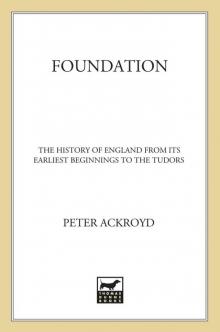 Foundation
Foundation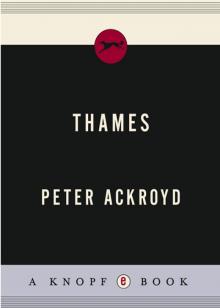 Thames
Thames The Plato Papers
The Plato Papers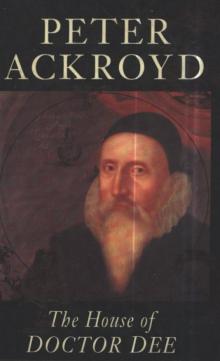 The house of Doctor Dee
The house of Doctor Dee Rebellion: The History of England from James I to the Glorious Revolution
Rebellion: The History of England from James I to the Glorious Revolution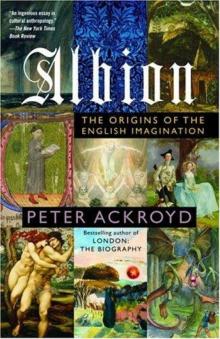 Albion: The Origins of the English Imagination
Albion: The Origins of the English Imagination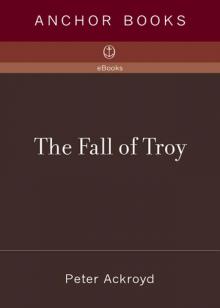 The Fall of Troy
The Fall of Troy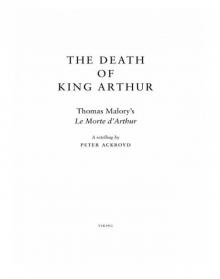 The Death of King Arthur
The Death of King Arthur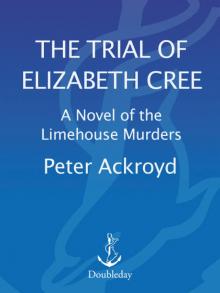 The Trial of Elizabeth Cree
The Trial of Elizabeth Cree London: The Biography
London: The Biography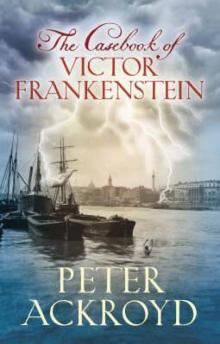 The Casebook of Victor Frankenstein
The Casebook of Victor Frankenstein Hawksmoor
Hawksmoor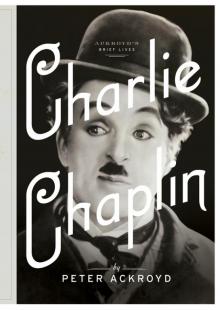 Charlie Chaplin
Charlie Chaplin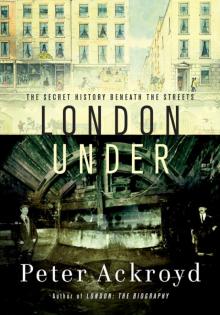 London Under
London Under